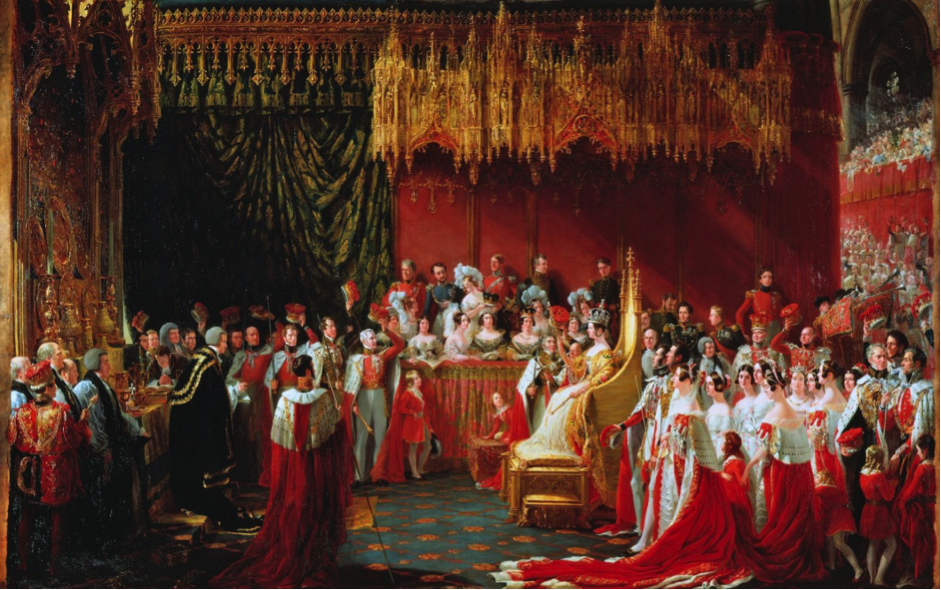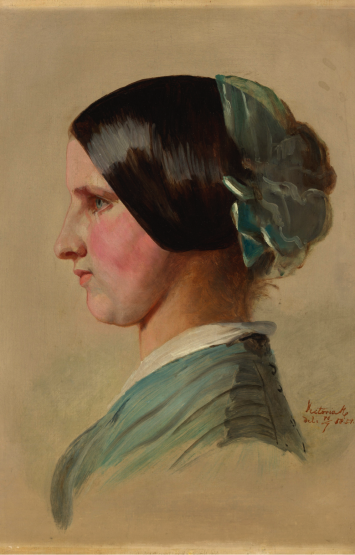Queen Victoria, Prince Albert and Artists at Their Court

At the time of his marriage in 1840 the idealistic young Prince Albert is in love with Italian art and culture. He hopes to awaken in England the techniques of fresco painting in public buildings. Damp, smoke and pollution threaten destruction to the paintings, as predicted by Lord Melbourne, to whom the Prince will not listen. Instead he tries cleaning the frescoes with stale bread, to little effect.
His many ideas include the decoration with delightful paintings of a small pavilion in the gardens of Buckingham Palace; however Prince Albert’s most successful Italian-inspired venture would be Osborne House on the Isle of Wight.
In July 1839 the famous Eglinton Tournament takes place in Ayrshire, Scotland. There is a King of the Tournament, a Queen of Beauty and Knights of the Griffin, the Dragon, the Crane, the Ram and the Swan. At 6 p.m., just before the Grand Procession, the rain comes down hard. Everyone goes home in omnibusses under umbrellas. “Serve them right for being so silly!” says the down-to-earth young Queen, describing herself as “a very modern person.” Soon, however, she will become smitten by a portrait of Prince Albert dressed as a mediaeval knight “Rather absurd but very becoming” says Lady Lyttleton.

Head of a Maid Queen Victoria 1819-1901 1837 (?)
The two favourite Royal artists each possess warmth and charm. Franz Xavier Winterhalter has a strong sense of humour, much enjoyed by the Queen and Prince. Edwin Landseer designs the Royal writing paper and teaches the couple to etch. He can also imitate bird noises, tell ghost stories and draw two different things at the same time with different hands. But in later life he takes publicly to the bottle. Though horrified “He is hardly fit to be about and looks quite dreadful” , the Queen remains loyal to her old friend. She sends him flowers and kind letters and invites him to Balmoral from time to time.
Artists of the day, including W.P. Frith and David Roberts, keep lively journals which contain candid accounts of the ups and downs of royal patronage.
With watercolours by Queen Victoria and paintings by Edwin Landseer, David Roberts, W.P. Frith, Thomas Sully, Franz Xavier Winterhalter and other artists of the day. And with coloured engravings, from the British Museum, of the frescoes from the Garden Pavilion in the grounds of Buckingham Palace
This lecture has been given to branches of The Arts Society in England and Australia, and at arts festivals in England.